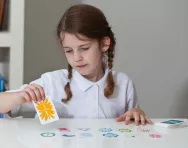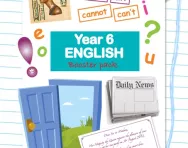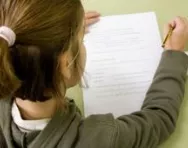Important update from TheSchoolRun
For the past 13 years, TheSchoolRun has been run by a small team of mums working from home, dedicated to providing quality educational resources to primary school parents. Unfortunately, rising supplier costs and falling revenue have made it impossible for us to continue operating, and we’ve had to make the difficult decision to close. The good news: We’ve arranged for another educational provider to take over many of our resources. These will be hosted on a new portal, where the content will be updated and expanded to support your child’s learning.
What this means for subscribers:
- Your subscription is still active, and for now, you can keep using the website as normal — just log in with your usual details to access all our articles and resources*.
- In a few months, all resources will move to the new portal. You’ll continue to have access there until your subscription ends. We’ll send you full details nearer the time.
- As a thank you for your support, we’ll also be sending you 16 primary school eBooks (worth £108.84) to download and keep.
A few changes to be aware of:
- The Learning Journey weekly email has ended, but your child’s plan will still be updated on your dashboard each Monday. Just log in to see the recommended worksheets.
- The 11+ weekly emails have now ended. We sent you all the remaining emails in the series at the end of March — please check your inbox (and spam folder) if you haven’t seen them. You can also follow the full programme here: 11+ Learning Journey.
If you have any questions, please contact us at [email protected]. Thank you for being part of our journey it’s been a privilege to support your family’s learning.
*If you need to reset your password, it will still work as usual. Please check your spam folder if the reset email doesn’t appear in your inbox.
SATs revision: your KS2 SATs English helper

KS2 English SATs: understanding the test
At the end of Year 6 children sit a KS2 English SATs exam, which is made up of three papers:
- Grammar, punctuation and spelling paper 1: this consists of about 49 questions that test grammar and punctuation, and takes 45 minutes.
- Grammar, punctuation and spelling paper 2: this is a spelling test. The teacher will read 20 complete sentences out loud. Children have these sentences on a printed sheet with one word missing, and they need to fill in the missing word, spelling it correctly. This takes about 15 minutes.
- Reading: children are given a booklet containing three texts in different styles (e.g. a story, a non-fiction piece and a poem), and an answer book with approximately 36 questions about the three texts. Children have an hour in which to answer the questions in any order they choose.
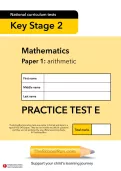
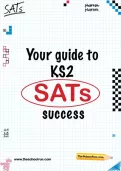
Prepare your child for KS2 SATs today
- Your guide to KS2 SATs
- KS2 SATs revision course
- 10 KS2 SATs practice papers in English & maths
Previously, children sat a writing test as part of KS2 SATs, however teachers now assess writing levels by looking at a child's writing throughout the whole year.
SATs were revamped in 2016. You can download the official KS2 English SATs papers to practise with at home.
You can also download all of the old-style official past papers for KS2 English SATs to help familarise your child with taking exams. These are in a different format from the new tests, but will still be useful for preparation. Read our guide to using past papers for at-home practice.
If your child is revising for KS2 SATs the following tips and activities will help them prepare.
Reading and KS2 English SATs: tips and advice
Read outside the book
Children need to get used to reading non-fiction texts as well as stories. Try to encourage children to read texts associated with events or interests that are meaningful to them; for example, if they like football, read through a match programme or a newspaper report with them. If you’re planning a holiday this summer, get your child to read up on your destination of choice.
Give them goals
A time limit and a reward can be really motivational, so why not set your child a challenge to read one book a week? At the end of each week, encourage them to tell you about the story and then give them a (small!) reward of their choice. Having said that, make sure you never force them to read something they are not interested in; this is counter-productive, and could put them off reading for good!
Reading together
Bring back the 'bedtime story' for your eleven year old! Take turns to read out loud with your child, guaranteed to improve their reading and their listening skills, as well as a brilliant way to spend time together. When you are listening to your child encourage them to read with expression and to do different voices for different characters. You can also ask them comprehension questions (they can test you when it's your turn to read out loud!); look at KS2 SATs Reading tests for ideas on kinds of questions to ask.
Read between the lines
When asking your child questions about what they have been reading, think about inference (reading between the lines) and deduction (reading beyond the lines). An example of an inference question is: 'Pick out two phrases that tell us the bear is angry with Goldilocks.' An example of a deduction question is: 'How do you think Goldilocks might have felt as she ran away?' Encourage your child to consider conflicting emotions that characters might be experiencing, for example: 'Maybe she feels happy to have got away from the bears, but a bit guilty about all the trouble she has caused. She might be worried that people will find out and she will get told off.'
Download the sample test
Practising a sample SATs paper will help your child enormously. You may want to go through it with them, getting them to read the text aloud to you and then talking through the questions, or you may want to let them do it unaided so that you can see what they are capable of. If you do let them get on with it alone, make sure you go through their answers with them. Maybe just deal with one text at a time, and do it over two days, to avoid pressurising your child.
Grammar and punctuation and KS2 English SATs: tips and advice
In the new grammar and punctuation test, children are likely to be tested on the following:
- Use of full stops, capitals, commas, brackets, question marks, exclamation marks, speech marks, apostrophes.
- Understanding what nouns, pronouns, prepositions, contractions, connectives, adjectives, verbs and adverbs are and how to use them.
- Knowing how to add suffixes and prefixes to words.
- In sentences, being able to make subjects and verbs agree, putting verbs in the correct tense, inserting words with the correct plural and recognising a subordinate clause.
- Knowing the difference between direct and indirect speech
The Year 6 English curriculum includes plenty of grammar work to prepare them, but you can also read up about the 'SPAG' test and find grammar practice activities to work through at home on TheSchoolRun. If you are unsure about grammatical vocabulary, look up the terms above in our primary-school literacy glossary to get you up to speed.
Spelling and KS2 English SATs: tips and advice
The following spellings are covered in Years 5 and 6, and are likely to feature in the spelling paper:
| Words ending | cious/tious cial/tial ant/ance/ancy ent/ence/ency able/ably ible/ibly ferred/ferral/ferance |
| Words beginning | co- re- |
| Words containing | ei/ie ough silent letters b, s, n, t, k |
| Homophones | Ending ce/se plus other homophones |
You can download Y5 and Y6 spelling worksheets covering the above spellings.
Of course, it's also important to deal with the spellings that your child is struggling with. One way to do this is to encourage them to write a story or information text for you and then look at the words they are struggling with. Alternatively, ask their teacher if you can look at their literacy book and go through, making a list of types of words that they are getting wrong (for example: words ending -ing or words with ie/ei in them). Encourage them to learn these words and other similar words. Get them to make and decorate their own flashcards, then test them by holding up the card, then putting it face down and asking them to write the word from memory.
Writing and KS2 English SATs: tips and advice
There is no formal SATs test in writing; instead, this will be assessed by your child's teacher throughout the year. However, it's still important to keep your child's writing skills ticking over. Here are some ideas to try at home.
Build up the layers in a sentence
Help your child to write more creatively by giving them a practical challenge.
- Start with a boring sentence, such as: 'The girl had curly hair.'
- Ask them to think of a couple of adjectives to describe the curls.
- Could they use a powerful verb and adverb to show how the curls are moving?
- Could they compare the curls to something else, to create a simile or a metaphor?
A much-improved sentence would be: 'The girl had shiny, springy curls that bounced wildly like a jack-in-the-box.'
Structuring texts
Does your child enjoy putting pen to paper? Encourage them to write both fiction and non-fiction texts. It can help to look through stories and non-fiction texts they have read and discuss the way they are structured. Help your child to plan a text and then give them a set time limit (say, 45 minutes) to write their text unaided. It is always best to start from something they are interested in, so encourage them to write a different version of a story they love, or write their own information text on something they have found interesting.
Handwriting skills and KS2 English SATs: tips and advice
By Year 6, your child should have got into the habit of good, fluid handwriting, but if this is not the case look through our handwiting advice and practice worksheets. Remind your child that good handwriting means their work it easier to read, but also gives the person marking their writing a better general impression of the writing.
KS2 maths revision advice
For a complete list of the skills and knowledge required of children taking KS2 maths SATs see our tips and advice for the Y6 maths test.
